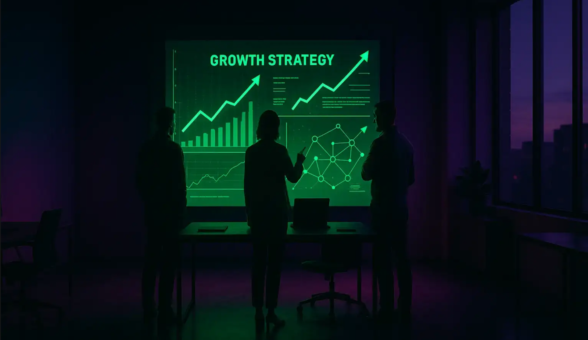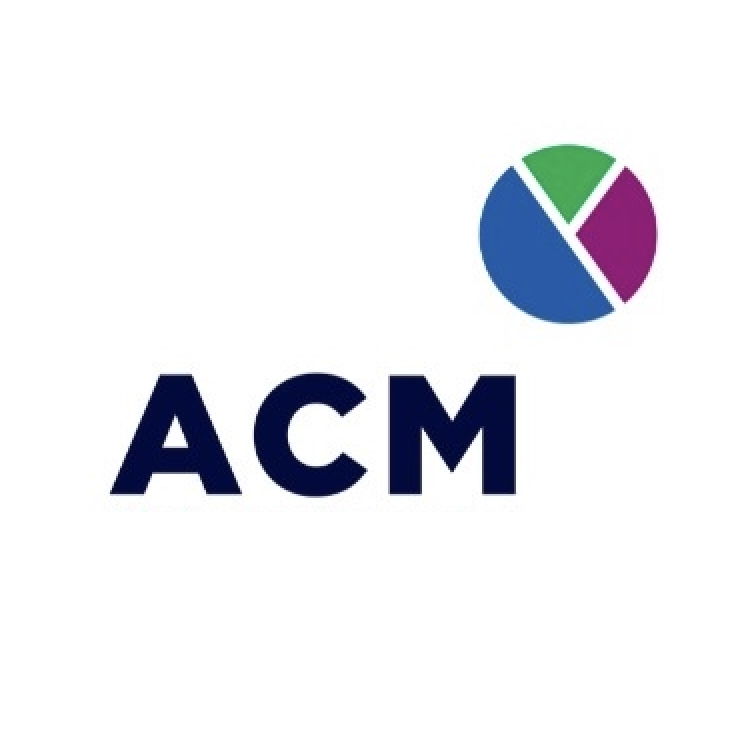
Effective, Efficient, Flexible: A Key to Business Success?
Feeling lost with the concepts of being effective, efficient, and flexible in business? Are you unsure how to balance these dimensions to optimize your organizational performance? Discover how strategic resource management, market adaptability, and process optimization can transform your business model while preserving your ability to respond to rapid environmental changes.
| Indicator (RACE Model) | Effectiveness | Efficiency |
|---|---|---|
| Reach | Revenue per visit, Audience share vs. competitors, Total search demand gap | Cost per acquisition (CPA), Click-through rate (CTR) |
| Act | Average order value, Number of items per order | Bounce rate, Pages per visit |
| Convert | Margin, Customer satisfaction (site experience) | Lead/sales conversion rate, Payment conversion rate |
| Engage | Online active customers rate, Subscribers/Followers, Customer value, Overall customer satisfaction | Repeat conversion rate, Customer activity (newsletters, social media) |
| Financial Results | Online contribution (direct/indirect), Profit generated | Channel costs, Channel profitability |
| Customer Value | Sales per customer, New customers, Online market share, Customer loyalty index | Online reach (% of potential visitors), Cost per acquisition (CPA), Customer propensity |
Understanding Business Effectiveness
Effectiveness refers to a company’s ability to achieve its objectives. Tangible results measure it. Meeting commercial or operational targets is a key indicator of success. Strategic goals guide an organization over 3 to 5 years and steer major decisions and resource use. For example, a cosmetics company increasing its market share by 5% within 12 months is a concrete illustration of effectiveness. Ninety-six percent of organizations include operational excellence in their three-year strategic plan.

Efficiency: Resource Optimization
Efficiency focuses on the optimal use of resources to produce goods or services. Unlike effectiveness, it measures productivity relative to inputs. Producing 1,000 units with the same resources as before is a good example.
Process mapping is a key methodology for identifying bottlenecks and optimizing workflows to increase efficiency. Industrial process analysis reveals that the better utilization of time, labor, and raw materials enhances profitability. The manufacturing sector has seen productivity gains of 15-40% by adopting these best practices.
Flexibility: Critical Adaptability
Organizational flexibility refers to a company’s ability to adapt to market changes. It encompasses five dimensions: workplace, schedules, methods, task content, and workforce. 89% of high-performing organizations report superior results thanks to increased responsiveness.
In the face of recent upheavals, businesses had to rethink their structure. In the tech sector, 60% of employees were able to continue working despite health restrictions, thanks to the use of digital tools. Digital transformation enabled 48% of companies to maintain operations despite challenges.
The Interdependence of the Three Concepts
These three dimensions reinforce each other in a high-performing organization. A well-orchestrated supply chain exemplifies this synergy, meeting its objectives (effectiveness), optimizing costs (efficiency), and adapting to disruptions (flexibility). According to a Business International study (1991), organizational flexibility appears as an integrative concept in new management theories, shaping the interactions between effectiveness, efficiency, and adaptability.
- Essential Interdependence: Efficiency optimizes resources to strengthen effectiveness, while flexibility ensures strategic goals are met despite market uncertainties.
- Conflicting Objectives: Excessive standardization to boost efficiency may reduce adaptability, creating a dilemma between discipline and agility.
- Flexibility and Innovation: Hybrid models (e.g., agile methods) show that flexibility fosters creativity and resilience while maintaining effective processes.
- Risks of Flexibility: Poorly managed adaptability can lead to complexity, hidden costs, or team disengagement if resources are not aligned.
These complex interactions require a strategic approach to balance the dimensions and maximize performance. Leading companies invest in cultural alignment, skills development, and continuous performance measurement. Let’s now explore how contemporary challenges are redefining these concepts in the next chapter.
Digital transformation is reshaping the fundamentals of organizational performance. Digital tools are changing the way objectives are achieved, resources are optimized, and adaptations are made. Companies that have adopted relevant digital strategies have seen a 25-35% increase in productivity. The example of Air Liquide with its “Connect” plan demonstrates how digitalization fosters interactivity among dispersed teams.
Specific technologies strengthen each dimension of performance. AI enhances effectiveness by automating HR processes via platforms like Vorecol Performance. Cloud computing improves efficiency by centralizing data, enabling informed decision-making. IoT boosts flexibility with real-time collaboration tools. Companies that have migrated to these technologies have seen cost reductions of up to 90% in some cases.
Recent crises have disrupted organizational priorities. The pandemic revealed that 79% of large French companies needed to provide greater flexibility. Players in the banking sector had to reinvent their operational methods, with remote work becoming a requirement for 70% of the workforce.
The resilience strategies deployed during times of crisis led to lasting structural changes. Companies diversified their resource sources to reduce dependencies. Digital tools are now embedded in the DNA of organizations. HR coaching has expanded to strengthen key skills in the face of uncertainty. For that, feel free to consult our human resources advisory services. The lessons learned have transformed organizational approaches.
Environmental challenges are redefining performance parameters. Regulations, such as the 2021 Climate and Resilience Law, require companies to optimize their energy efficiency. CO2 emissions from transportation account for approximately 17% of the average carbon footprint. Digital sobriety is emerging as a strategic pillar.
New ESG metrics evaluate performance comprehensively and holistically. Environmental indicators measure carbon footprint and energy consumption. Social criteria assess diversity and employee satisfaction. Governance checks ethics and compliance. These comprehensive KPIs guide strategic decisions while addressing societal expectations.
Changing employee expectations are impacting the balance of the three dimensions. 70% of workers want flexible work arrangements. Hybrid models combine effectiveness, efficiency, and adaptability, offering a unique blend of these qualities. Companies like Dassault Systèmes or HubSpot illustrate how these new practices enhance overall performance.
Hybrid work models are reshaping the landscape. They optimize effectiveness by combining the strengths of in-person and remote work. Efficiency improves through the use of digital tools that reduce travel. Flexibility becomes a competitive advantage to attract talent, with 60% of employees willing to change companies for greater autonomy.

Sectoral Examples: Comparison of Approaches and Outcomes
The Technology Sector: Prioritizing Flexibility
Technology companies like Google, Amazon, and Microsoft exemplify the priority placed on flexibility. These organizations adopt agile methods, enabling them to innovate quickly and adapt to market changes. Their corporate culture values experimentation, initiative, and continuous learning.
Agile methodologies have a profound impact on the performance of tech organizations. They restructure teams around products or services, establish short iteration cycles, and promote cross-functional collaboration. Regular retrospectives enable continuous process improvement and real-time adjustments to priorities.
The Manufacturing Industry: Efficiency at the Core
The manufacturing industry, represented by players such as Toyota, Siemens, and Airbus, places efficiency at the core of its strategy. These companies implement methods like Lean Manufacturing or Six Sigma to eliminate waste and improve process quality.
Transformations in the industrial sector are responding to intense competitiveness challenges. Customers demand more personalization without sacrificing margins, prompting companies to rethink their business models. Industry 4.0 tools, including connected production and predictive analytics, provide concrete solutions.
The Banking Sector: Between Efficiency and Compliance
Banking institutions navigate between two major imperatives. They must deliver operational performance while adhering to stringent regulatory frameworks. The digitization of processes serves as a key lever to reconcile these demands.
Banks face specific challenges regarding the three dimensions of performance. The rise of fintechs forces traditional players to rethink their approach while maintaining high standards of security and compliance.
Between strategic effectiveness, operational efficiency, and adaptive flexibility, your organization must master all three dimensions to navigate a changing world successfully. Sustainable performance is built through a balanced approach to your processes, resources, and capacity for innovation. Ready to turn these concepts into concrete actions to build a resilient and competitive company?
FAQ
How can organizational flexibility be accurately measured?
Organizational flexibility is measured by a company’s ability to adapt to changes in its environment. There is no single metric, but several indicators can be combined to provide an accurate assessment. Analyzing management methods, flexibility rates, and workstation utilization rates are good indicators.
Employee satisfaction, measured through surveys and regular feedback, is also a key indicator. Operational efficiency must also be evaluated in terms of cost reduction and process simplification, as well as employee leadership and autonomy.
What tools can improve efficiency?
To improve a company’s efficiency, several tools can be employed. Start with rigorous financial management, including accounts receivable collection and the reduction of indirect costs. Optimizing systems and processes is also essential, as this involves simplifying unnecessary steps and leveraging technology.
Human resource management plays a crucial role. It’s essential to assess staff skills, organize training, and delegate tasks to the most competent individuals. A SWOT analysis (Strengths, Weaknesses, Opportunities, and Threats) and process mapping help identify areas for improvement and implement continuous enhancements.
How can effectiveness, efficiency, and flexibility be balanced in practice?
Balancing effectiveness, efficiency, and flexibility is crucial to business performance. Effectiveness—the ability to achieve objectives—must be complemented by efficiency, which means achieving those objectives with minimal resources. Flexibility allows the company to adapt to environmental changes quickly.
This balance is reflected in the company’s ability to anticipate and adapt to changes, optimize resource utilization, and drive innovation. Involving employees in this process is essential, as they are often best positioned to suggest concrete improvements.
How does company culture influence these three concepts?
Company culture influences effectiveness by setting expectations for work and quality. A positive culture boosts employee morale and leads to higher levels of engagement. A culture that encourages open communication enables faster and more informed decision-making.
Culture also impacts efficiency by promoting experimentation and risk-taking. Companies with innovative cultures encourage employees to act quickly on their ideas, fostering flexibility and adaptability to changing market conditions. This, in turn, ensures that employees remain relevant and adaptable.
What are the common pitfalls to avoid during implementation?
When implementing a business that’s practical, efficient, and flexible, several pitfalls should be avoided. It’s essential to have a clear and shared vision, a business strategy aligned with innovation, and realistic goals. A company culture that values innovation and empowers employees is crucial.
Sufficient investment in resources, alignment of functional teams, and a deep understanding of customers are also crucial. Change must be managed through clear communication and employee involvement to prevent resistance and ensure a successful transition.
How can these concepts be adapted to SMEs/micro-businesses?
For SMEs and micro-enterprises, adapting the concepts of effectiveness, efficiency, and flexibility means achieving business plan goals, turning resources into valuable activities, and responding quickly to changing market conditions. SMEs benefit from specific strengths, such as proximity to the market and the ability to learn quickly.
It’s essential not to pursue efficiency, effectiveness, and flexibility simultaneously, as these goals can often conflict with one another. Balance is essential. To improve energy efficiency, small businesses can benefit from financial support for expenses related to enhancing the energy performance of their buildings.
Other articles

Working in Silos: Impact on Organizational Efficiency
Read the article
SME Strategy: Your Roadmap to Success
Read the article
Growth or Profitability: How to Find the Right Balance for Your SME
Read the article

